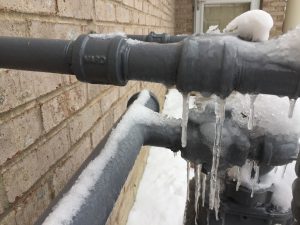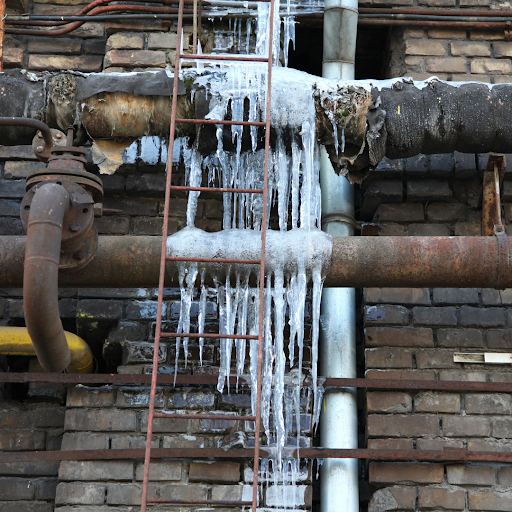Avoiding Frozen Plumbing in Cold Weather: Key Strategies
Avoiding Frozen Plumbing in Cold Weather: Key Strategies
Blog Article
How do you actually feel with regards to Helpful Tips to Prevent Frozen Pipes this Winter?

Cold weather can ruin your pipes, particularly by freezing pipes. Below's exactly how to prevent it from occurring and what to do if it does.
Intro
As temperature levels decline, the threat of icy pipes increases, possibly leading to expensive fixings and water damage. Understanding just how to prevent frozen pipelines is critical for home owners in cold environments.
Recognizing Icy Pipes
What causes pipelines to freeze?
Pipelines ice up when revealed to temperature levels below 32 ° F (0 ° C) for extended durations. As water inside the pipes ices up, it broadens, putting pressure on the pipeline walls and possibly causing them to rupture.
Risks and problems
Icy pipelines can bring about supply of water disruptions, building damage, and pricey repair work. Ruptured pipes can flooding homes and create substantial architectural damage.
Indications of Frozen Pipeline
Determining frozen pipes early can prevent them from rupturing.
Exactly how to determine icy pipelines
Look for decreased water flow from faucets, uncommon smells or sounds from pipes, and visible frost on exposed pipes.
Prevention Tips
Insulating vulnerable pipes
Wrap pipes in insulation sleeves or use warm tape to safeguard them from freezing temperatures. Concentrate on pipes in unheated or external locations of the home.
Home heating strategies
Keep interior areas appropriately heated, specifically locations with plumbing. Open up cupboard doors to allow cozy air to flow around pipes under sinks.
Protecting Exterior Plumbing
Yard pipes and exterior faucets
Separate and drain garden pipes prior to winter. Mount frost-proof spigots or cover outside taps with insulated caps.
What to Do If Your Pipelines Freeze
Immediate activities to take
If you suspect icy pipelines, keep faucets available to ease stress as the ice thaws. Make use of a hairdryer or towels taken in hot water to thaw pipes slowly.
Long-Term Solutions
Structural modifications
Take into consideration rerouting pipelines far from exterior walls or unheated locations. Add additional insulation to attics, cellars, and crawl spaces.
Upgrading insulation
Buy premium insulation for pipelines, attics, and wall surfaces. Proper insulation assists keep consistent temperatures and lowers the risk of icy pipelines.
Verdict
Protecting against frozen pipes requires proactive steps and quick reactions. By understanding the causes, indications, and safety nets, property owners can shield their plumbing during winter.
5 Ways to Prevent Frozen Pipes
Drain Outdoor Faucets and Disconnect Hoses
First, close the shut-off valve that controls the flow of water in the pipe to your outdoor faucet. Then, head outside to disconnect and drain your hose and open the outdoor faucet to allow the water to completely drain out of the line. Turn off the faucet when done. Finally, head back to the shut-off valve and drain the remaining water inside the pipe into a bucket or container. Additionally, if you have a home irrigation system, you should consider hiring an expert to clear the system of water each year.
Insulate Pipes
One of the best and most cost-effective methods for preventing frozen water pipes is to wrap your pipes with insulation. This is especially important for areas in your home that aren’t exposed to heat, such as an attic. We suggest using foam sleeves, which can typically be found at your local hardware store.
Keep Heat Running at 65
Your pipes are located inside your walls, and the temperature there is much colder than the rest of the house. To prevent your pipes from freezing, The Insurance Information Institute suggests that you keep your home heated to at least 65 degrees, even when traveling. You may want to invest in smart devices that can keep an eye on the temperature in your home while you’re away.
Leave Water Dripping
Moving water — even a small trickle — can prevent ice from forming inside your pipes. When freezing temps are imminent, start a drip of water from all faucets that serve exposed pipes. Leaving a few faucets running will also help relieve pressure inside the pipes and help prevent a rupture if the water inside freezes.
Open Cupboard Doors
Warm your kitchen and bathroom pipes by opening cupboards and vanities. You should also leave your interior doors ajar to help warm air circulate evenly throughout your home.

We are very drawn to Helpful Tips to Prevent Frozen Pipes this Winter and I hope you enjoyed our entry. Sharing is nice. Who knows, you may just be doing someone a favor. Thank you for being here. Kindly come by our website back soon.
Book Your Appointment Report this page